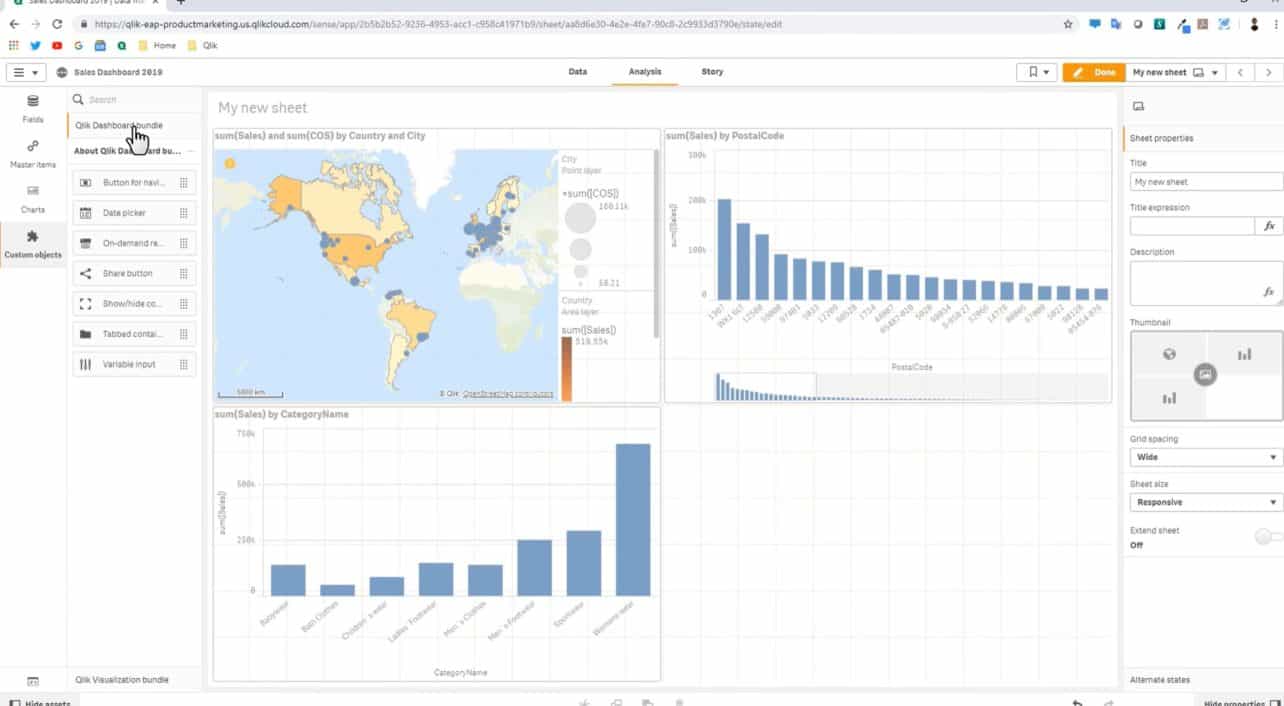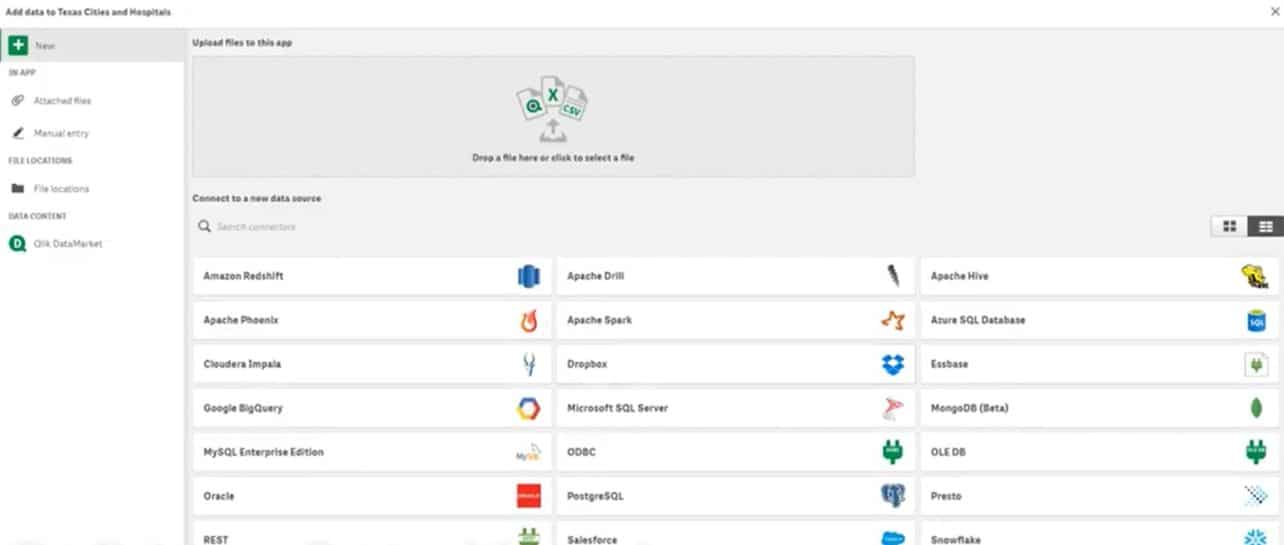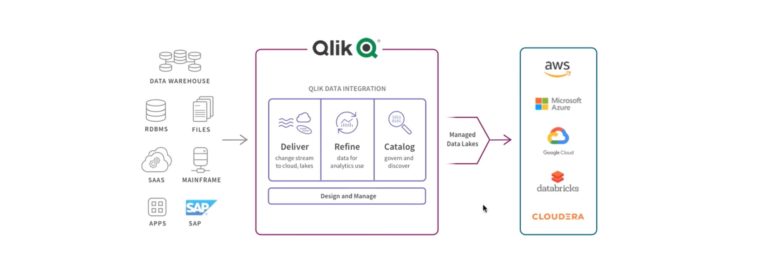Qlik aims to play a bigger role in the data analytics journey of enterprises. This means addressing both Business Intelligence (BI) and data integration. A unified approach which Qlik calls an end-to-end data platform, ultimately leading to ‘Active Intelligence’.
The BI industry is experiencing a wave of consolidation. Qlik completed several acquisitions to further expand its platform and address analytics even more. Meanwhile, the market leaders in BI also got acquired. Qlik was acquired by private equity firm Thoma Bravo, while competitors Tableau and Looker were acquired by Salesforce and Google. These private equity firms and parents have different intentions and expect innovation.
Given these consolidation, Qlik’s intention to do more for its customers make sense. During QlikWorld this broader focus got explained.
What does Active Intelligence mean?
Qlik defines its strategy as achieving Active Intelligence. This means providing enterprises intelligence to support decision making, by bringing together data at rest with data at motion.
Data at rest refers to data stored at a certain location, such as a database or backup environment, and that is not actually in use. Despite being inactive, this data is valuable for BI. You may recognize trends from a few months in this dataset, which might occur again in the future.
However, Active Intelligence must also consider the fact that data does not resides in one location. There is also data that moves from your own on-premise environment to the cloud, for example, because you are migrating on-premise ERP to the cloud. This so-called data in motion must also be included to get complete visualisations.

There is also a third type of data, the so-called data in use. This data is being generated or updated. Qlik also addresses this data because the company is aware of the importance of accurate and up-to-date data.
By taking the different types of data, traditional BI transforms. Previously, this IT discipline was mainly based on pre-configured datasets to inform and act. Active BI, however, considers the real-time characteristics of data, so action can be taken immediately. This can be done by informing a person, but also by having BI independently draw a conclusion to automatically put applications to work.
It starts with data integration
According to Qlik, this can only be truly achieved with a platform for the end-to-end BI analytics cycle. The first issue that should be addressed is data integration, where data from multiple sources are merged to create datasets. To combine this data, the APIs of the various systems must be examined, which can be quite a challenge for the average data scientist and developer. The APIs contain very detailed documentation that the employee theoretically should know. This is very complex, meaning most companies choose specialised data integration services, like Informatica or Boomi.
Tip: Dell Boomi takes complexity out of integrations with iPaaS software
Qlik already provided some integration capabilities, but given its ambition to make data integration its second core activity, it acquired Attunity in 2019 for $560 million dollar (approximately €500 million). This ultimately brings a lot of application connectors to the Qlik product family, and so the BI vendor for enterprise applications, which Attunity brings to the product family. This resulted in the launch of the Data Integration Platform.
Ideally, Qlik customers will soon use this data integration platform in combination with the company’s analytics capabilities.
The Data Integration Platform addresses the process before applying analytics to data. This starts with selecting data from different sources, for example, from an Oracle database or SAP software. For connecting to enterprise applications, the platform offers hundreds of connectors. The data from these applications is transferred to the next destination, which is often a data warehouse. A popular use case is Snowflake. Qlik carries out all kinds of tasks regarding this data warehouse, for example, concerning the data replication process. The integration platform can, among other things, ensure that data continues to be delivered automatically so that everything remains up to date. Snowflake applies its data warehouse technology, which means making unusable data usable for analytics purpose. This requires a specialised data warehouse product because it knows how data is stored, as data in Oracle is different than data in SAP, ultimately merging the data in a uniform dataset. With Snowflake, Qlik has a close integration so that the entire process runs as smoothly as possible.
The data is then ready for analytics, whether it is for proprietary Qlik technology or Tableau or Microsoft PowerBI.

Combination with analytics
Ideally, Qlik customers will use this data integration platform together with its analytics capabilities. A combination of both products completes the end-to-end data platform idea. However, companies will not be forced to use both products. If they only rely on Qlik for BI and want to address integration with another solution, that is fine.
Qlik clearly positions itself more as an end-to-end data platform, but the ambition to further develop the BI capabilities as a stand-alone product remains. Currently, the focus is mainly on what Qlik calls the third generation of BI. In this new phase of Business Intelligence, data is simplified, AI is used to support humans, and analytics are used for every decision a company makes. We wrote another piece about what Qlik thinks about the new generation of BI.
It makes a lot of sense that Qlik addresses more data-related tasks. BI is becoming an increasingly common part of SaaS applications, call it becoming commodity. Almost all SaaS solutions offer BI capabilities. Taking some additional steps as BI vendor, is more than welcome. On the data integration side as well as on the analytics side, Qlik has expressed that more upgrades will come to achieve Active Intelligence. We are curious what the company will do in the future.
